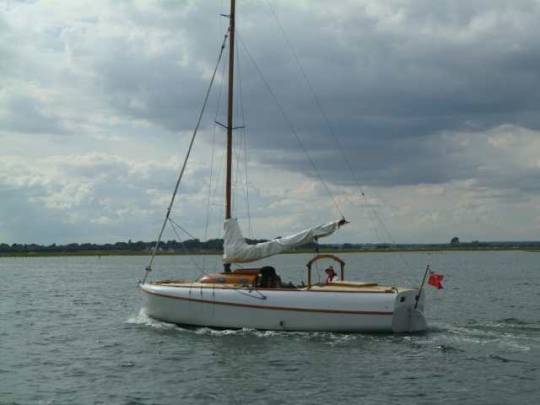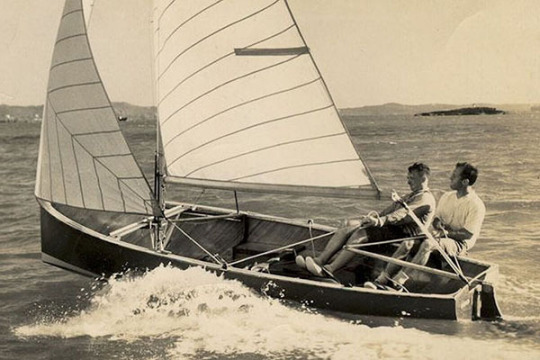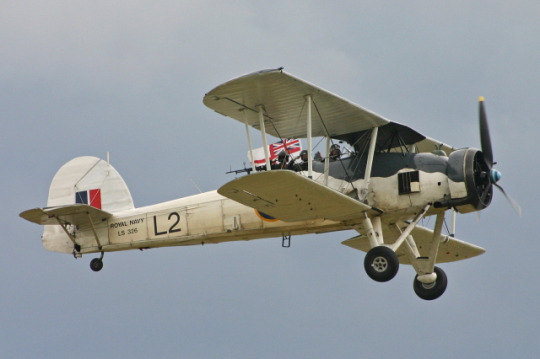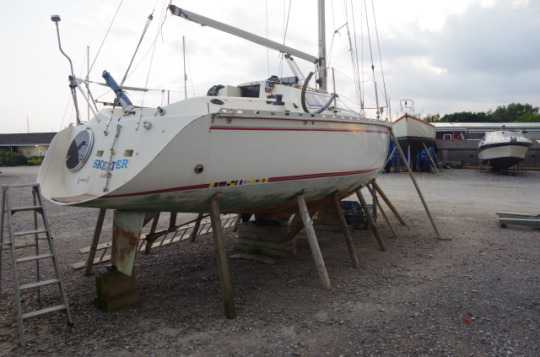#Jack and Foxy for their registered names
Text
‘F’ is for Uffa Fox
‘F’ is for Fairey Atalanta.
Blog time : well, it’s mid April and just going into week 4 of this strange life. As far as my own boat and sailing life are concerned the boss is keeping a good eye on WABI”’ and has had the hatches open to air the boat out for me. Obviously i’m not out on the water and not writing any new material based on my own boat. In blog life all i’m working on are the new posts for this series as all of the posts that i was working on in the spring are now out there. My own life is probably about to change radically if things work out as i expect they will ; that’s because i’m now back on the temporary/emergency register and it looks as though i might get deployed to the emergency Nightingale hospital in London…that’s obviously going to be the ‘hot’ zone. If that works out well then i’ll be working on my own next boating project while i’m away and i can take more time over the next designer in this series.
In this post for the design series i’m really just looking at one design from one prolific designer, sailor and all-round total English eccentric ; Uffa Fox. The boat is the highly unusual and funky looking Fairey Atalanta designed by the late Uffa Fox in 1955 alongside Alan Vines ; an executive of Fairey Marine. The boat was then mass produced using some radically new building techniques between 1956 and 1968. Many Atalanta’s still exist today, many have been restored and there is an active owners association.

Right at the start of this post i have to point out that all of the photographs i have used come from other sources and not my own files ; most of them appear on the Atalanta owners association website or found during a general image search. The title photograph also, is of a very modified deck/coachroof version which i think looks great and very different.
Uffa Fox…..Yachtsman and designer.
I regard the late Uffa Fox as the most important and influential small boat designer ever, at least from the narrow perspective of British designers : i place him above other brilliant designers of small sailing craft like Maurice Griffiths and William Fife for example because he took the design and construction of small craft in completely new directions. Later on in the design series i hope to be able to show how later designers like David Thomas and Jack Laurent Giles, and then modern designers like Keith Callaghan all owe a lot to Uffa Fox’s radical new designs.
As i re-read biographies of Uffa Fox he comes across as a brilliantly eccentric man who managed to be both at the centre of a very conservative and traditional yachting community based around Cowes on the IOW , at a time when it was an important ‘Royal’ yachting venue and centre of the English yachting world, and at the same time being a maverick and radical designer. He was for example closely connected to the British royal family at play, regularly sailing with or crewing for HRH Prince Philip and the young Royals , often in his or their Dragon class racing yachts.
In 1938 Uffa Fox designed the first of several International 14 racing dinghy’s, the most famous of which was ‘Thunder and Lightning’, the radical feature of the new designs being their ability to plane rather than just being displacement hulls. The International 14 class was then, as it is now, a development class and that same boat not only planed downwind in a breeze but could generate a lot more power upwind because of another new device….the trapeze…..instantly banned as being ‘unsporting’ until a few years later. Now of course the International 14 is a double trapeze boat and still very quick even when compared with more modern dinghy designs.

Fairey Marine and the Atalanta.
Fairey Marine Ltd, was a boat building company based on the River Hamble near to Southampton on the Uk’s south coast.. The company was created in the late 1940s by Sir Charles Richard Fairey and Fairey Aviation‘s managing director, Mr. Chichester-Smith. Both were avid sailing enthusiasts along with Chichester-Smith’s good friend and former Olympic yachtsman, Charles Currey. Fairey Aviation of course was the company responsible for designing and building wartime aircraft such as the Fairey Swordfish, which, even as an ‘obsolete’ carrier based biplane managed to stick a torpedo up the backside of the Bismark which led to that ship’s eventual sinking only 8 days into her one and only wartime mission !
As the war drew to a close Fairey and Chichester-Smith both decided that they should produce sailing dinghies utilising techniques that had been employed in the construction of aircraft. Charles Currey was recruited to help run the company when he came out of the Royal Navy. The world air speed record holder Peter Twiss joined Fairey Marine Ltd from Fairey Aviation in 1960 and was responsible for development and sales of day-cruisers. In 1969, commanding the Huntsman 707 Fordsport, he took part in the Round Britain Powerboat Race, and included among his crew members, Rally champion Roger Clark. Boats were primarily designed by Alan Burnard.
In the early years, thousands of dinghies were produced by Fairey Marine including the Firefly, Albacore, Falcon (dinghy), Swordfish (dinghy), Jollyboat, Flying Fifteen, 505 and International 14‘s along with the much smaller Dinky and Duckling. Later on in the 1950s they produced the larger sailing cruisers, the Atalanta (named after Sir Richard’s wife), Titania, Fulmar and the 27-foot (8.2 m) Fisherman motor sailer (based on the Fairey Lifeboat hull) along with the 15′ Cinderella (outboard runabout)/ Carefree (inboard runabout), and the 16’6″ Faun (outboard powered family cruiser).
By way of a side-line here, Fairey were using very similar techniques to the ones developed by the De Havilland company which used the extraordinary (for then) concept of building wooden framed and skinned aircraft…and that resulted in the fastest wartime fighter/bomber cum recconaisance plane ; the famous Mosquito.
Fairey Swordfish.

Personal interest.
Many readers will be aware that while i really like my little Hunter Liberty i could really do with a bit more waterline length, more space (volume) , more sailing ‘power’ and while keeping the Liberty’s ability to sail shallow rivers and dry out level at the end of the day. Some readers will also know, because i wrote several posts, that i did a serious search for a slightly larger and more capable boat and that one group of boats that i found were the post IOR designs of around 25 feet with lifting keels : the Dehler 25, Evolution 25 and Super-Seal 26.
Both of us went to see the Dehler and both almost instantly didn’t like the boat, the Evolution 25 that i had in mind disappeared off the market and i couldn’t afford the larger Parker Super Seal although i think it might have made a good boat. The boat that really might have worked for me was the again slightly larger Kelt that i photographed in Wareham :

There was however one complete outsider in the mix and that was the much older Fairey Atalanta and one did come up on Ebay at about the same time ; i don’t remember now why i didn’t go and see it because it was only ‘just down the road’…ie about a hundred miles away !. Going way back, at least 25 years, when i first started thinking about owning my own boat in my post Whitbread race era i was talking to a yacht designer about what i was looking for in a boat and he told me about an Atalanta sitting in the yard somewhere behind Proctor spars place in the Hamble.
I was greatly intrigued so i went and saw the boat and yes, it had a lot of what i wanted and it was just about inside my budget except that it was in poor condition and it smelled very nasty inside…..i’m pretty sure there was some unhealthy wood in that one. I spent some time working up a budget for the potential rebuild and what i came up against straight away is the huge base cost of having a boat like that in a shed anywhere in the Hamble where covered space seems to be charged out by the square inch !. On top of that i did some research about repairs to an Atalanta hull and it does seem to be a more specialist job than a ‘normal’ ie carvel, wooden boat. The reason for that being that the whole hull is hot-glue laminated from Agba veneers in a large oven !.
I liked the basic concept and the actual boat though so i always kept it in mind for ‘maybe one day’ : today i still greatly admire the Atalanta and iv’e since seen some very nicely refitted ones. The size would still be about right, i could live with the layout , especially by converting the aft cabin to a large double + berth and i still love the funky looking 50’s shape. Given that these boats were first built in the 1950’s iv’e always fancied having one that was ‘born’ in the same year as me (1958)…..not the most intelligent or logical reason to own a boat but hey ….it’s me we are talking about !
The Atalanta file.
This slideshow requires JavaScript.
Here’s one for sale via the Atalanta owners website .
https://atalantaowners.org/f14-noggin-sale-2/
Funky, Foxy, Fairey. 'F' is for Uffa Fox 'F' is for Fairey Atalanta. Blog time : well, it's mid April and just going into week 4 of this strange life.
0 notes